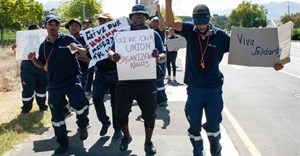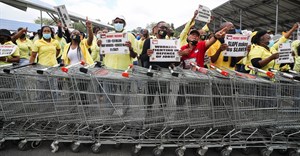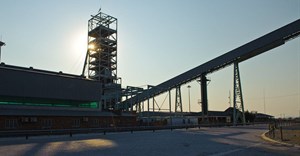The Marikana miners' strike has been an unmitigated disaster, not only for the violence and loss of life, but also for its impact on the local communities, the reputation of Lonmin, and the South African economy.
There are no winners
Management is trying to perform an insane juggling act between the demands for pay increases fuelled by a bitter union rivalry, and the awkward realities of trading conditions, rising costs and the laws of supply and demand. The mineworkers' main issue seems to be more socio-economic than wage-related. According to Afzul Soobedaar, the CCMA's mediator at Marikana, the conflict has everything to do with "frustration with living conditions, inequality, [and] poverty." And, according to the Bench Marks Foundation, the violence at Marikana is a result of "exploitation by the mines" and the benefits of mining "not reaching the workers or the surrounding communities."
But the question remains: how do you balance the financial implications of the seemingly reasonable demands for liveable wages and better living conditions with the reality of financial viability in an industry already in crisis? It is a dilemma that would have had Solomon stumped. So here is a message for the mining bosses: If you need help to sort out this mess, don't call me. And I won't be calling you either.
Lessons from Marikana
But there is a lesson to be learnt from Marikana if we want to avoid a similar situation from developing in our own businesses. One underlying cause of the Mexican standoff at Marikana is the head-on collision of the incompatible perspectives that management and workers have regarding the company's business objectives and where and how the workers fit into the overall scheme of things. It brings to mind the stonecutter story: A passer-by asked three labourers on a building site what they were doing. The first said he was cutting stones, the second that he was earning a living. The third that he was building a cathedral. The third clearly knows not only what he is doing, but also why he is doing it, what the bigger picture is, and how his humble contribution is going to help achieve something great and meaningful.
Management guru Peter Drucker has his own take on the story. He suggests that, from a management perspective, seeing the bigger picture is not enough. Real leadership is defined by ensuring that others also see it. However, the emphasis here is not on sharing management's vision, but on building a shared vision - which means genuine dialogue and involvement, not one-way communication. It means creating a collaborative work environment where employees have a voice and where they are empowered to contribute to the company's strategy. It means making sure their personal goals are aligned with that of the company. It means making sure that they understand what is expected of them and how their contributions will help the company to achieve its goals. And it means giving them constant feedback and consistently recognising their efforts. In short, it means enabling them to experience their work as meaningful, to feel that they are contributing to something bigger than themselves in a workplace that shares their values.
Are workers' needs met?
All this assumes, however, that the workers' basic physiological and safety needs are met - with due deference to Maslow's "hierarchy of needs". Most workers are too busy trying to survive to worry about the company's big picture or abstract notions such as meaningful work. But even if they work just to earn a living, as the second stonecutter did, the 8 or more hours they spend at work each day add up to more than just earning a living - it ultimately represents the embodiment of their self-worth as human beings, their ambitions as breadwinners for their families, their dreams and hopes of expressing themselves, their yearning to add value to someone or something bigger than themselves.
So creating a work environment where even those who only work to earn a living can do meaningful work will result in a more productive, engaged and emotionally committed workforce willing to help build that cathedral. To quote Michael F. Steger (The Meaning in Life, Psychology Today, June 2009) "A growing body of evidence shows that meaningful workers are happy workers, more committed workers, and, in some tantalising ways, better workers." Now that will go a long way towards preventing our businesses from spiralling out of control into another Marikana.




















